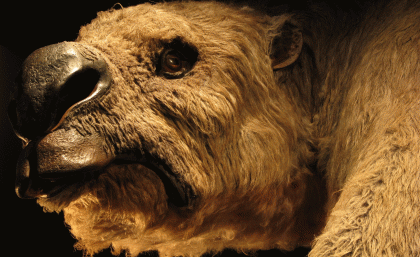Disappearing lakes stoke megafauna debate

New research into central Australia's ancient lakes has found evidence that climate change contributed to the extinction of the continent's megafauna.
Dr Joshua Larsen from The University of Queensland's School of Geography Planning and Environmental Management, said water resources I Australia were changing significantly about 48,000 years ago when humans arrived and megafauna became extinct.
"Our findings are the first clear evidence to directly support the idea that climate played a role in the last megafauna extinction, and that it was not solely attributable to humans," he said.
"This is critical information for understanding how our own impact on the environment interacts with natural changes, so that we can improve environmental management strategies."
Australia's Pleistocene megafauna – large animals which included the giant bird Genyornis newtoni and the giant marsupial Diprotodon – became extinct between 45,000 to 50,000 years ago.
Previous research has suggested that humans were spreading across the continent around the same time, hunting and using fire to manage their environment.
"The debate has been strongly on the side of human agency in the Australian megafaunal extinction, but we show direct evidence of massive changes to the lakes in central Australia which would have had huge ramifications for regional climate and megafauna habitat," Dr Larsen said.
The researchers studied ancient shorelines and river deposits in the Lake Eyre basin to understand how previously overflowing megalakes became predominantly dry and salt encrusted beaches.
"We found that major changes to the water cycle caused the megalakes to enter a final and catastrophic drying phase approximately 48,000 years ago, close to the time that humans arrived and the megafauna went extinct," Dr Larsen said.
"The drying out of these lakes would have required a climate shift sufficient to cause the rivers to stop flowing every year, increasing flow variability and decreasing reliability, which is the situation we have today.
"The records of past environmental conditions are patchy and most of the time we are relying on indirect evidence for what megafauna and humans might have been doing, but now we can confidently put the water cycle and climatic change in the mix.
"These findings are important for understanding the sensitivity of water on the land surface to climate changes, and the sensitivity of large animals to changes in habitat."
The research was conducted in collaboration with the University of Wollongong and Stockholm University.
It is published in Geology and highlighted Nature.
More information: "Hydrological transformation coincided with megafaunal extinction in central Australia" Geology, G36346.1, first published on February 2, 2015, DOI: 10.1130/G36346.1
"Drying lakes linked to extinctions." Nature 518, 277 (19 February 2015) DOI: 10.1038/518277a
Published online 18 February 2015
Provided by University of Queensland



















